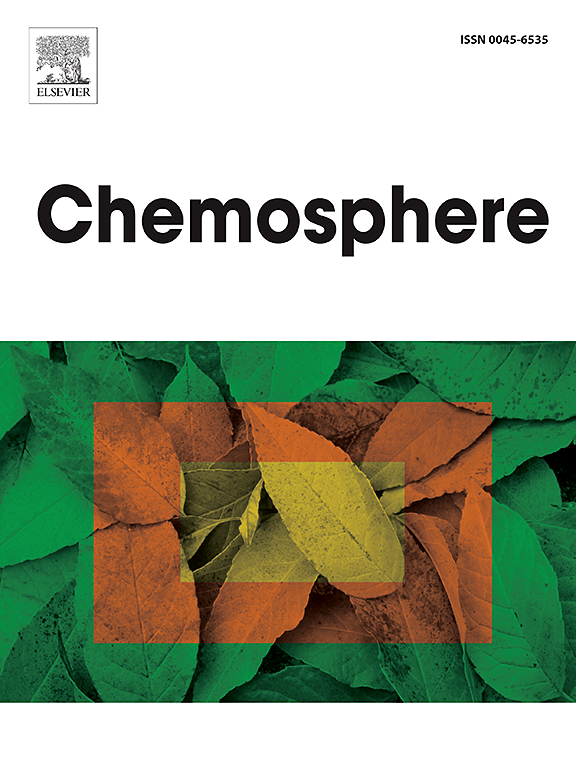Exposure to emerging water contaminants and human health risk: Cytotoxic and genotoxic effects of caffeine and diethyltoluamide (DEET) on eukaryotic cells
IF 8.1
2区 环境科学与生态学
Q1 ENVIRONMENTAL SCIENCES
引用次数: 0
Abstract
The presence of emerging pollutants in aquatic ecosystems due to human activities poses substantial concerns. While many studies explore detection and removal techniques for these compounds, conventional treatment methods often fail to address emerging pollutants. Moreover, there is a lack of legislation defining safe thresholds for these substances in water. Consequently, caffeine and N,N-diethyl-meta-toluamide (DEET) persist in surface waters, including treated sources, with limited understanding of their genomic effects on human cells. This study aimed to assess the cytotoxic and genotoxic effects of caffeine and DEET, individually and in combination, at concentrations detected in drinking water, using HepG2 cells. Additionally, through systems biology, we sought to understand the underlying molecular mechanisms of both substances. Cytotoxicity was evaluated using MTT and Trypan Blue assays, while genotoxicity was assessed using the comet assay. The chemoproteomic interaction network was constructed using STITCH and STRING databases, with subnetworks analyzed using Cytoscape plugins (MCODE, CentiScaPe, and BiNGO). Both compounds reduced HepG2 cell viability in a dose-dependent manner in both assays. Caffeine and DEET also induced DNA damage at all tested concentrations, including in co-exposure. Proteins related to the inflammatory response, signaling pathways, and xenobiotic metabolism were the main hub-bottlenecks of the chemoproteomic interaction network. These findings underscore the urgent need for further investigations into the presence of emerging pollutants in drinking water and their potential risks to human health.

暴露于新出现的水污染物和人类健康风险:咖啡因和二乙基甲苯酰胺(避蚊胺)对真核细胞的细胞毒性和基因毒性影响
由于人类活动而在水生生态系统中出现的新污染物引起了极大的关注。虽然许多研究探索了这些化合物的检测和去除技术,但传统的处理方法往往无法解决新出现的污染物。此外,没有立法规定这些物质在水中的安全阈值。因此,咖啡因和N,N-二乙基-间甲苯酰胺(避蚊胺)持续存在于地表水中,包括处理过的水源,人们对它们对人类细胞的基因组影响的了解有限。本研究旨在评估饮用水中检测浓度的咖啡因和避蚊胺的细胞毒性和基因毒性作用,使用HepG2细胞。此外,通过系统生物学,我们试图了解这两种物质的潜在分子机制。细胞毒性采用MTT和台盼蓝法评估,遗传毒性采用comet法评估。使用STITCH和STRING数据库构建化学蛋白质组学相互作用网络,使用Cytoscape插件(MCODE、CentiScaPe和BiNGO)分析子网络。两种化合物均以剂量依赖性的方式降低HepG2细胞活力。咖啡因和避蚊胺在所有测试浓度下也会引起DNA损伤,包括共同接触。与炎症反应、信号通路和外源代谢相关的蛋白质是化学蛋白质组相互作用网络的主要枢纽瓶颈。这些发现强调迫切需要进一步调查饮用水中出现的新污染物及其对人类健康的潜在风险。
本文章由计算机程序翻译,如有差异,请以英文原文为准。
求助全文
约1分钟内获得全文
求助全文
来源期刊

Chemosphere
环境科学-环境科学
CiteScore
15.80
自引率
8.00%
发文量
4975
审稿时长
3.4 months
期刊介绍:
Chemosphere, being an international multidisciplinary journal, is dedicated to publishing original communications and review articles on chemicals in the environment. The scope covers a wide range of topics, including the identification, quantification, behavior, fate, toxicology, treatment, and remediation of chemicals in the bio-, hydro-, litho-, and atmosphere, ensuring the broad dissemination of research in this field.
 求助内容:
求助内容: 应助结果提醒方式:
应助结果提醒方式:


